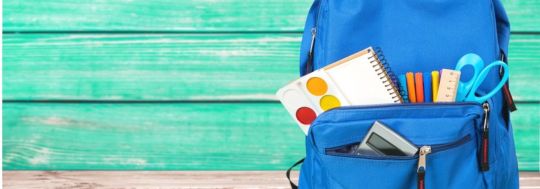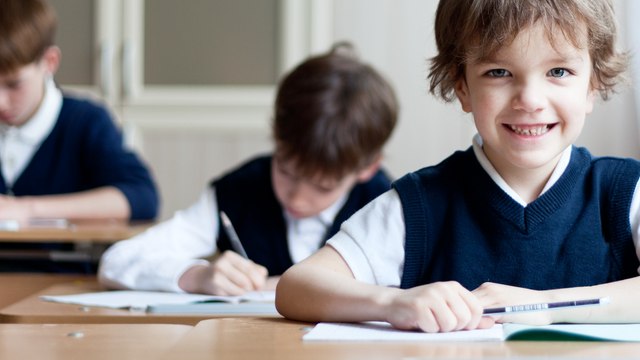Back to school: Subsidies and rebates that can help you cover the costs

There are a number of subsidies and rebates that may help with back to school costs. Here’s a look at some on offer.
Roughly four in five (83%) of Aussie parents find back to school shopping stressful, with the biggest contributors to their stress being the cost (51%), according to Big W’s latest Back to School Report conducted through YouGov.
The report found that Aussie parents are planning on spending an average of $592 on school supplies per child in 2021 – up 10% from the previous year. This includes:
- School uniforms: $180
- School shoes: $111
- Stationery: $92
- School bags: $58
- Lunch boxes and water bottles: $43
- All other items: $108
That means it’s before you take into account technology devices such as laptops, headphones and tablets and any school fees. Then there are extracurricular activities, such as swimming or music lessons, which can quickly add up.
The good news is there are a number of payments available that may help you cover some of these costs, most of which are offered by state and territory governments. On a federal level you may be able to apply for the Child Care Subsidy if you are paying for Outside School Hours Care. The government also offers payments under the Assistance for Isolated Children Scheme for parents and carers of children who can’t go to a local state school. This could be because of geographical isolation, disability or special needs.
Here are some of the payments on offer from the various state and territory governments. It’s worth noting that you may have to meet certain conditions to be eligible, for example some are only available to certain concession card holders. You can take a look at the website provided for details on how these work and whether you may be eligible.
Queensland
If you have a child in high school you may be eligible for a Textbook and Resource Allowance to contribute towards the cost of textbooks and learning resources. Students in years 7-10 could get $130 a year, while students in years 11-12 could get $281 a year.
The Queensland government also provides assistance under the School Transport Assistance Scheme to help eligible students whose access to a school is hindered by distance, disability or cost.
Parents, carers or guardians with children aged from five to 17 years may be eligible for a FairPlay voucher valued up to $150 for their child. This can be used towards sport and active recreation membership, registration or participation fees with registered activity providers.
New South Wales
The NSW government offers a couple of payments to help with the costs of extracurricular activities. The Active Kids program provides vouchers for school-enrolled children to use towards sport and active recreation costs each year. You can get two $100 vouchers each year for each eligible child.
The Creative Kids program provides one $100 voucher a year for each eligible child and it can be used towards creative and cultural activities such as performing arts, visual arts, coding, languages, literature and music.
NSW students can also apply for a school travel pass. The School Student Transport Scheme gives eligible school students free or subsidised travel between home and school on NSW public transport.
If you live in an area where there is no public transport and you have to drive your child all or part of the way to school, you may be eligible for the School Drive Subsidy to partly offset the cost.
ACT
The ACT government provides assistance to low-income earners with dependent full-time students in years 7-10 under the Secondary Bursary Scheme. The payment is up to $750 a year for eligible students.
Victoria
The Victorian government’s Camps, Sports and Excursions Fund helps eligible students pay to attend school camps, sports and excursions. You can get $125 per year for eligible primary school students or $225 per year for eligible secondary school students.
Student scholarships may also be available to help you with the cost of your child’s education. They’re generally offered based on financial need or difficulties, your child’s school results or school and community activities your child takes part in.
Students who live more than 4.8km from the nearest school and do not have access to the free school bus service may be eligible for a Conveyance allowance.

Tasmania
The Student Assistance Scheme provides assistance to low-income families towards the cost of levies for students enrolled in a school from kindergarten through to year 12. Assistance is also available to grandparents raising grandchildren.
You may also be eligible for financial assistance to use towards the cost of travel to and from school. One example is a conveyance allowance if you live outside an area with an urban bus service, and more than five kilometres from the nearest government home area school, educationally appropriate school, or bus stop.
Under the Ticket to Play program, the Tasmanian government provides two vouchers up to $100 each towards club membership for children aged five to 18 years and listed on a Centrelink Health Care or Pensioner Concession Card or in Out of Home Care.
South Australia
The School Card scheme offers financial assistance with school fees (materials and services charges) for students attending government schools. If your school fees are less than the subsidy, the scheme can also help with other educational expenses such as uniform, camp and excursion costs. To qualify your family’s gross income must be below a certain limit.
School students living five kilometres or more from the nearest public school or school bus run can apply for a travelling allowance.
The government also offers a Sports Voucher of up to $100 a year per child, giving primary school aged children from Reception to Year 7 an opportunity to receive up to a $100 discount on sports or dance membership/registration fees.
Western Australia
The Secondary Assistance Scheme aims to assist low income families with secondary schooling costs. It consists of two allowances – an Education Program Allowance which is paid to the school and a Clothing Allowance that is paid to the parent.
The WA government also offers a Student Travel Subsidy Scheme to provide travel assistance to school students who are geographically isolated.
Then there’s the KidSport program which enables eligible Western Australian children aged five to18 years to participate in community sport by offering them financial assistance of up to $150 per calendar year towards club fees.
Northern Territory
The Back to School Payment provides students with an entitlement to receive educational items in term one of each school year. You may be entitled to receive $150 of educational goods and services for each child enrolled in a government or non-government NT school or preschool.
You may also be entitled to financial assistance if your child has to travel considerable distances to go to school each day, lives away from home to attend school or accesses distance education.
There is also the Sport Voucher scheme which provides vouchers that can be used towards kids’ sport, recreation and cultural activities. You may be able to get two $100 vouchers each year for each eligible child – one in January and one in July.
Other options to consider
If you are struggling to cover the costs and are on a low income you may consider looking into a No Interest Loan (NILS). NILS is funded by the Australian Government, in partnership with Good Shepherd and NAB, and can be used to cover a range of back-to-school expenses including books, uniforms, tablets and laptops and even school camps. “With these loans you can borrow up to $1,500 and repay only what you borrow with absolutely no interest, no fees and no charges, ever,” explained Good Shepherd CEO Stella Avramopoulos.
It may also be worth exploring Saver Plus for next year. (It’s too late for this year). If you’re eligible for the program, you set a savings goal for your education related item(s). You then open an ANZ Progress Saver account and start to regularly save over 10 months. If you reach your savings goal ANZ will match your savings (up to $500).
Cover image source: Billion Photos (Shutterstock)
This article was reviewed by our Editorial Campaigns Manager Maria Bekiaris before it was updated, as part of our fact-checking process.





